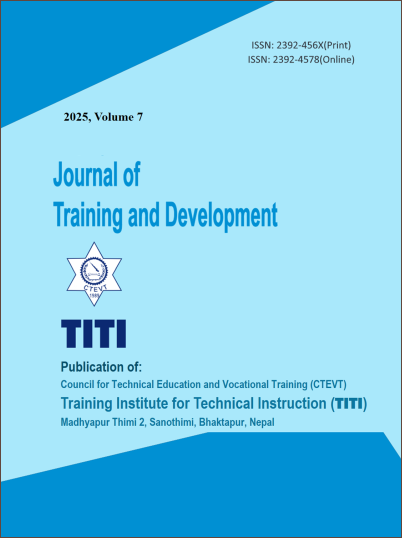Panchakosha: Foundations for Holistic Child Development
DOI:
https://doi.org/10.3126/jtd.v7i1.74977Keywords:
Yoga Nindra, Yamas, Niyamas, YogaAbstract
The Panchakosha theory, a cornerstone of ancient wisdom, offers a comprehensive framework for understanding the multifaceted nature of human beings emphasizing the nurturing of all five layers of being. This theory's application in education can revolutionize the way we approach child development, integrating the physical, emotional, intellectual, and spiritual dimensions. By incorporating elements such as Yoga Nidra, meditation, yoga philosophy, and mindful nutrition, educators can foster holistic growth in children and instill valuable social and personal disciplines promoting better concentration, calmness, and improved learning and memory. Educational philosophies from both Eastern and Western traditions, including contributions from notable thinkers, shape diverse and effective teaching methods. This article delves into the practical ways in which the Panchakosha Theory can be applied to education, offering insights into yogic practices, storytelling, and pedagogical strategies that align with both Eastern and Western educational philosophies.
Downloads
Downloads
Published
How to Cite
Issue
Section
License
Copyright (c) 2025 Purushottam Chapagain

This work is licensed under a Creative Commons Attribution 4.0 International License.
Authors who publish with this journal agree to the following terms:
- Authors retain copyright and grant the journal right of first publication with the work simultaneously licensed under a Creative Commons Attribution License that allows others to share the work with an acknowledgement of the work's authorship and initial publication in this journal.
- Authors are able to enter into separate, additional contractual arrangements for the non-exclusive distribution of the journal's published version of the work (e.g., post it to an institutional repository or publish it in a book), with an acknowledgement of its initial publication in this journal.
- Authors are permitted and encouraged to post their work online (e.g., in institutional repositories or on their website) prior to and during the submission process, as it can lead to productive exchanges, as well as earlier and greater citation of published work (See The Effect of Open Access).




